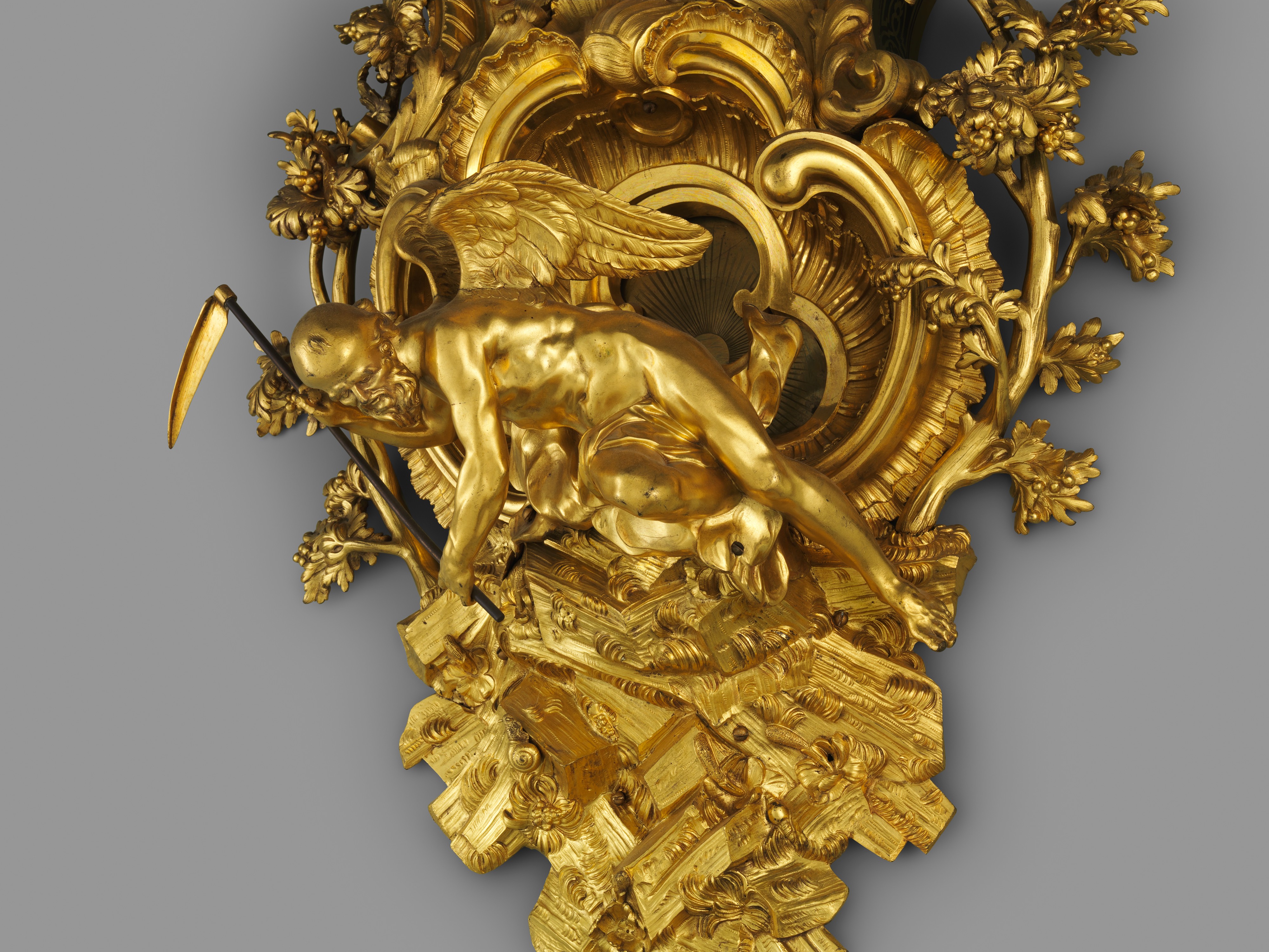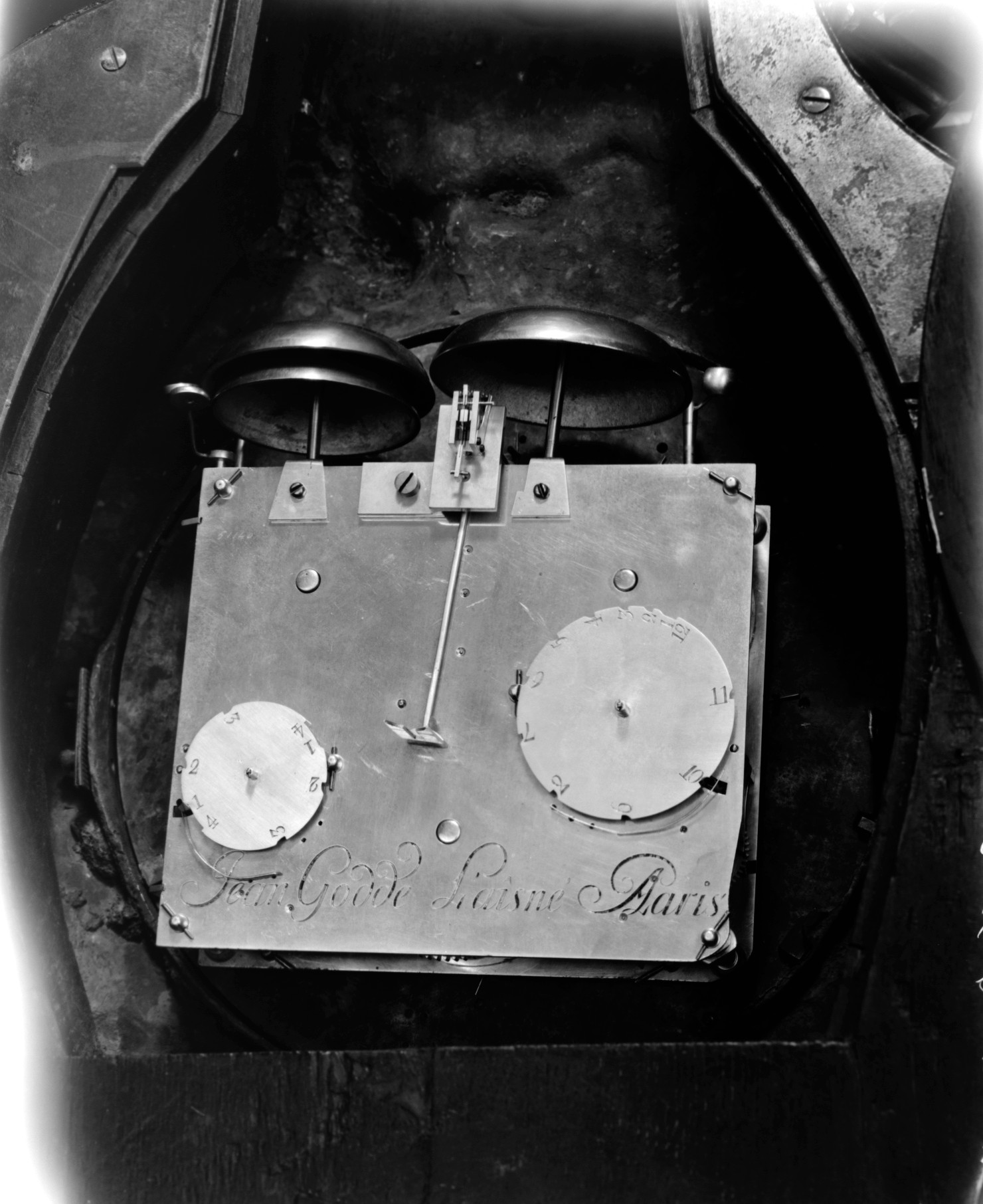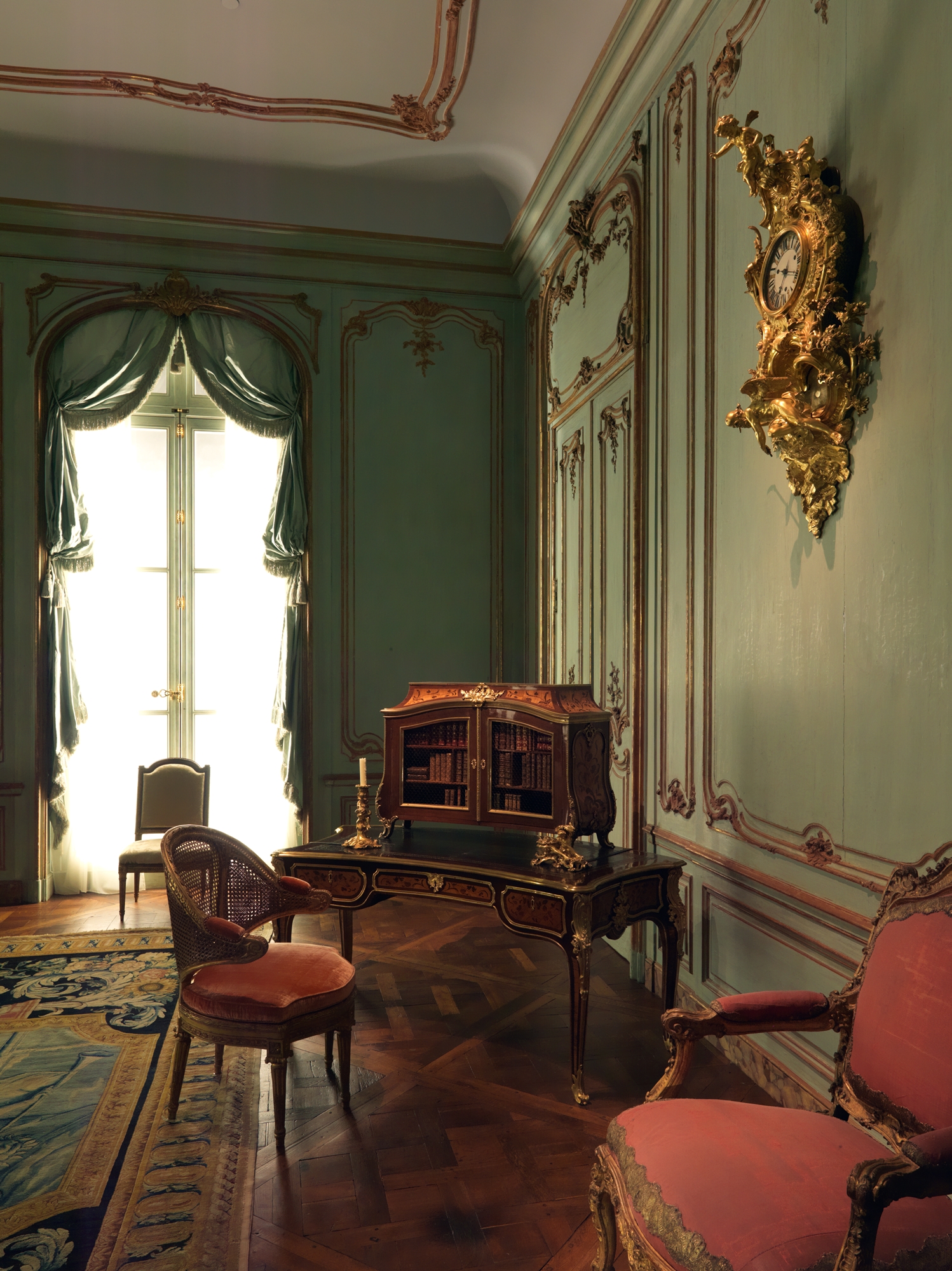Wall clock (pendule en cartel)
Clockmaker: Jean Godde l'aîné French
Case maker: Charles Cressent French
The theme of this magnificent Rococo wall clock with its asymmetrical design is the triumph of love over time. As the son of a sculptor and grandson of an ébéniste, Charles Cressent, who made the case, combined the talents of both and created not only outstanding case furniture but also highly imaginative sculpture in the form of bronzes d’ameublement. Firedogs, clock cases, wall lights, and mounts for furniture were cast and finished in his workshop, violating the rules of the bronze casters’ and bronze gilders’ guilds, to which Cressent, as a furniture maker, did not belong. As a result, three times during his life, legal proceedings were brought against him for employing casters, chasers, and gilders in his workshops. Financial difficulties forced him to organize three sales of his possessions, the first of which was held in 1749. The catalogues for these sales included detailed descriptions of the offered works, which allow the identification of certain clock models. Lot 25 of the 1749 catalogue, for instance, seems identical in its design to the Museum’s clock, of which several other examples are extant. The description mentions the winged putto, symbolizing love, at the cresting, seated on clouds and resting his elbow on an hourglass, while Father Time with his scythe reclines on the chaos of the world below. Also noted are the two large trees that frame the case and the fact that everything was beautifully chased and gilded. There is no reference to the sides of the clock case. They are veneered with marquetry of tortoiseshell and brass, so-called Boulle work, showing that Cressent was a master cabinetmaker as well. The movement is signed "Jean Godde L’aisné A Paris." Godde was one of several makers of clocks or watches by that name, and little is known about him.
Due to rights restrictions, this image cannot be enlarged, viewed at full screen, or downloaded.
This artwork is meant to be viewed from right to left. Scroll left to view more.





